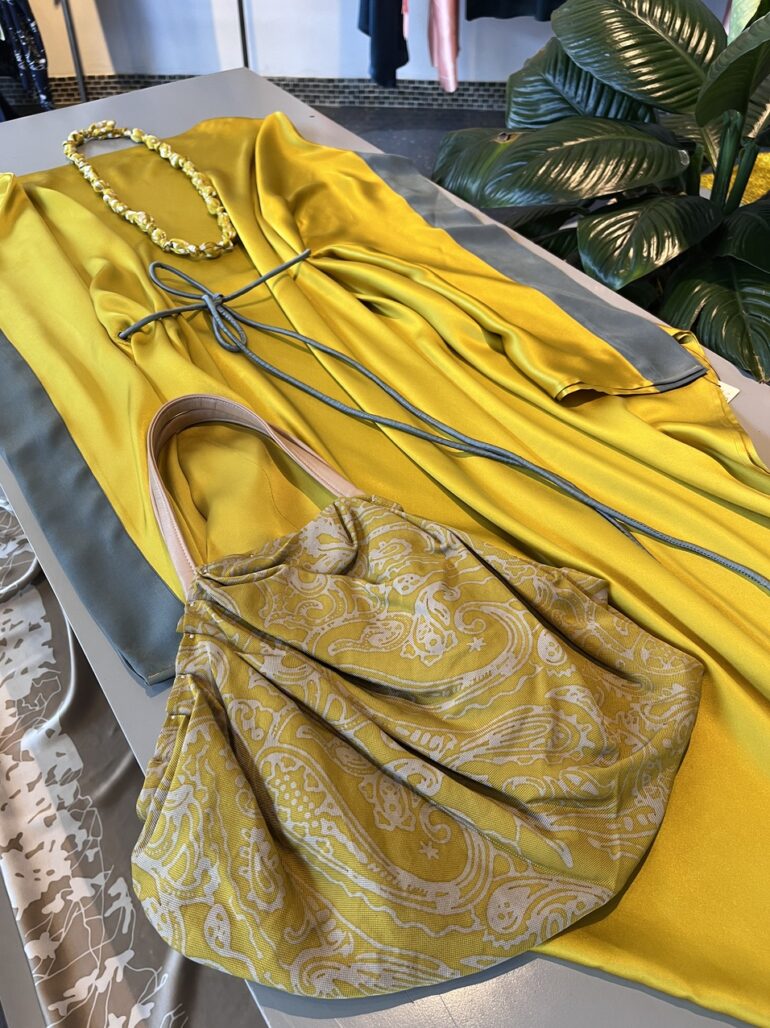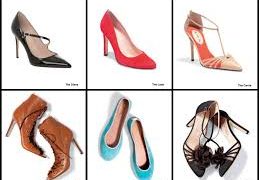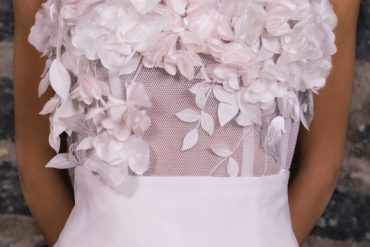Simonetta Quarti and Marco Lastrucci came to Bail twenty-three years ago. Both Italian and both in fashion, they were determined to help a friend with his art gallery. Ultimately, they fell in love with the island, the culture, and traditional Batik making.
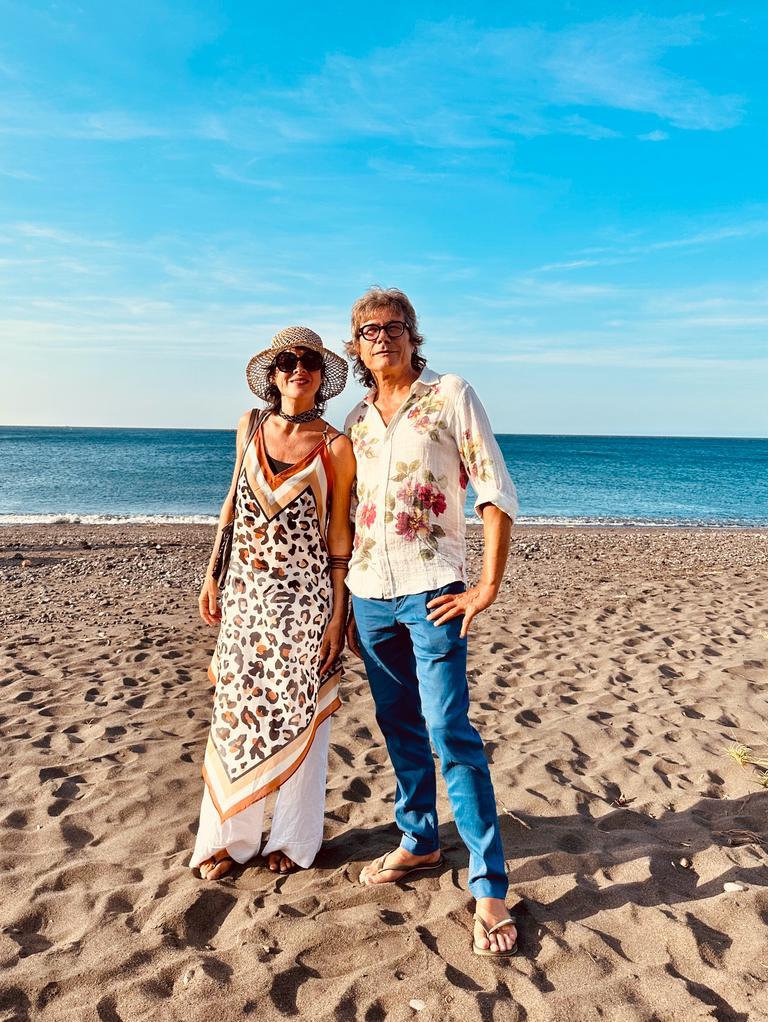
Simonetta had learned Batik while she was studying textile in Florence, so having the opportunity of setting up a workshop together with Marco in 2004 that was “clean, airy, light, and where creativity could thrive” was a dream come true. They have grown since then and now have a factory on the outskirts of Ubud, the cultural heart of Bali, where they employ 15 people who make the Batik in the traditional style on thick, velvety silk with an array of colors that are so rich, you feel as if you can taste them.
Starting with a white piece of silk, the fabric is stretched over a drawing created by Simonetta, and sketched in pencil on the silk. Once the pattern is arranged on the whole piece, it is then brought to another artisan who traces over the design with wax. The material is then stretched on a low wooden structure where it is hand painted. Once dry, it is treated to set the colors, then boiled briefly to remove the wax, and finally rinsed in cold water and dried in the sun. Once the Batik is ready it is brought to the seamstresses to be cut and sewn to one of the many clothing patterns that Simonetta has designed.
I had the opportunity to tour the workshop and then chat with Quarti and Lastrucci to find out more about their passion:
What inspires you?
S: Nature has been a huge influence; I live here year-round and I love to be in nature and what I see is this! So as you can see, we have thousands of flowers, of leaves… but I work with them very graphically. I use many colors, but not too many on the same fabric. I am fascinated by how to put the pattern on the clothes. First, I create the pattern for the fabrics. Next, we create a color combination together with the person in charge of colors. Then, we do a test and see if we need to change something then fix it and try again.
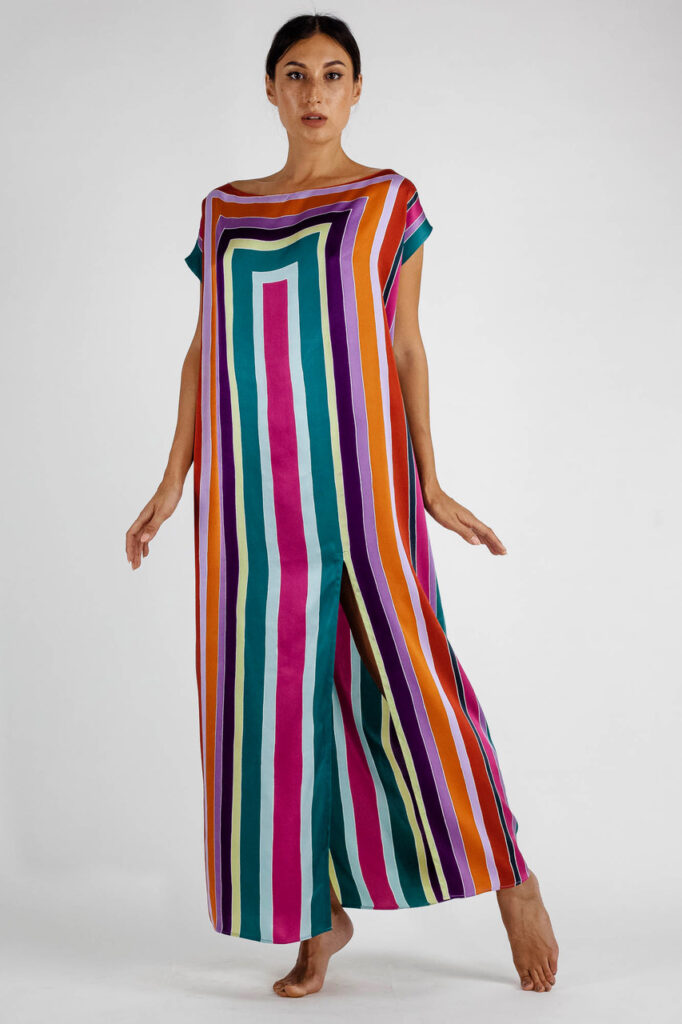
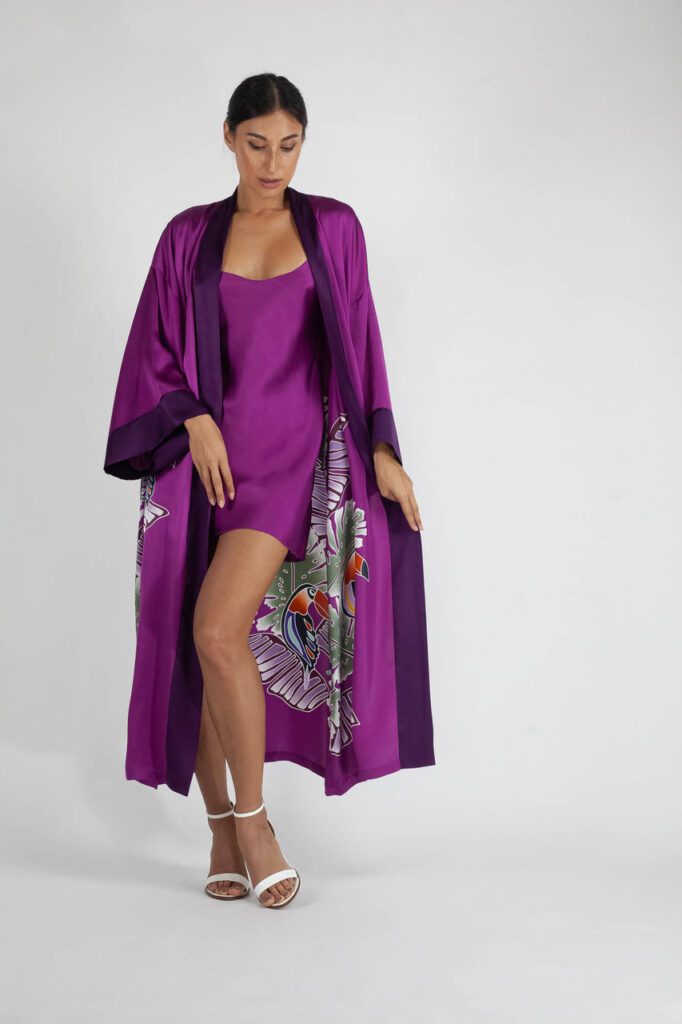
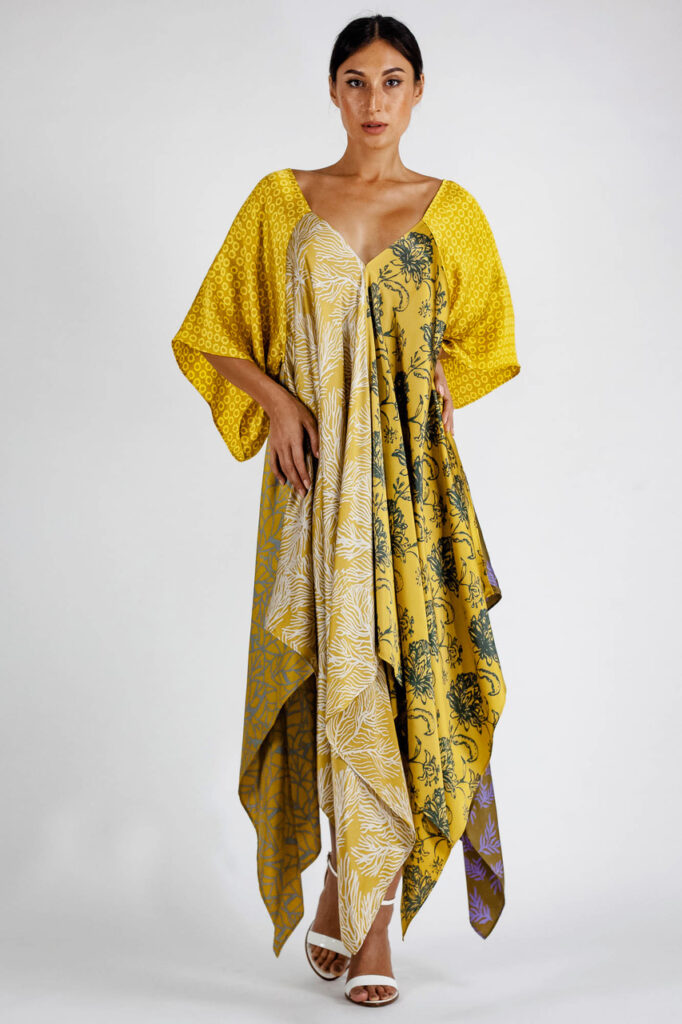
And for the design?
S: Once I have a pattern for the fabric that I like, then I work on the clothing style, of course taking inspiration from abroad. I am not a real fashion designer, I am a textile designer, so I put together different styles and apply the pattern. This is a process that really interests me to see how from my mind the final product comes out. It is very beautiful to see, it’s very real, and it happens very quickly.
Marco—you take care of the running of the company while Simonetta is the designer?
S: Marco is a very important person in the process right now. He is my alter ego.
M: Simonetta is “creativity innovation” and I am the one who tries to keep the creativity less. Most people create 80% of their collection in basic colors – blue, black, grey – we do the opposite, so I remind Simonetta that we need to integrate some basic so that our clients can relate. We run the company together.
Do you do wedding dresses?
M: We do not, as we are not trained in wedding dresses and it is very complex, we do nevertheless design a lot of custom wear for special events. Clients also often come to us often wanting a dress, Kimono, or caftan in an array of colors or with different designs printed on them and we are happy to do so.
Do you consider your company to be sustainable?
M: We do absolutely everything in our studio and sell in our shops all within 20 kilometers from here. Very few people still do Batik design any more; if you go to Java, Jakarta or Solo (other parts of Indonesia) there were the big centers of Batik but production shrank a lot and now it’s mainly silk print. There is also digital print. So it’s a technique that is disappearing.
S: We hope it isn’t disappearing so quickly but we are afraid. Even here in terms of finding people who are willing to learn the technique… you know how quickly the world is changing, and here is no exception. So let’s see. But so far, as long as we can we will go on.
Not only is our product produced in the most sustainable way, but we are very attentive to our staff. It is impossible for large companies to truly be sustainable—just producing the show is anti-sustainable when you think of the cost of the production. We are an example of Slow Fashion and proud of it.
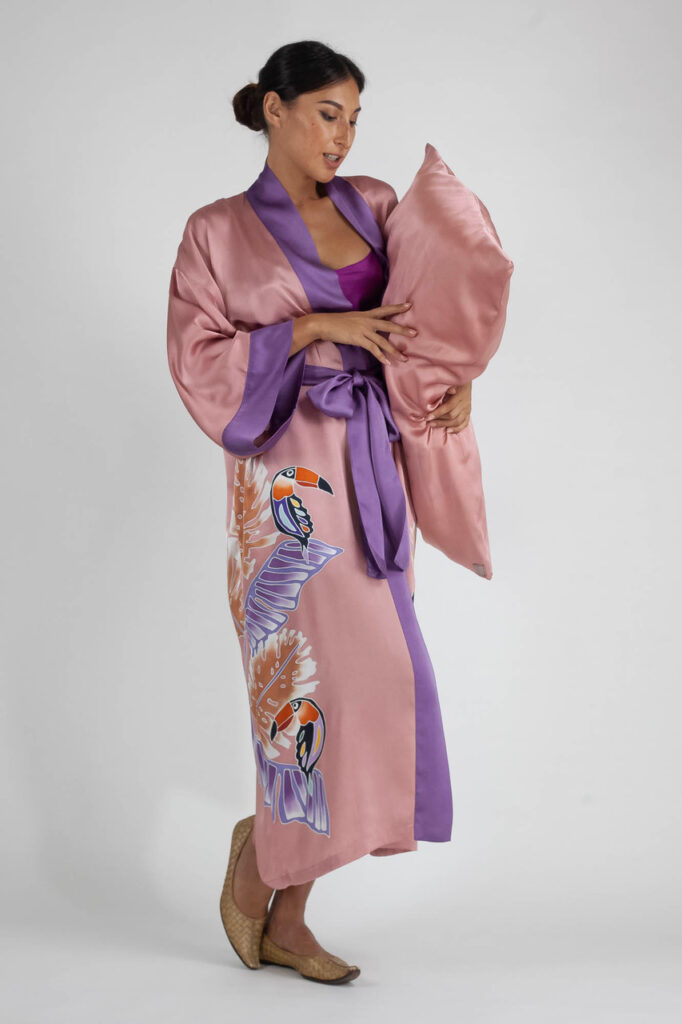
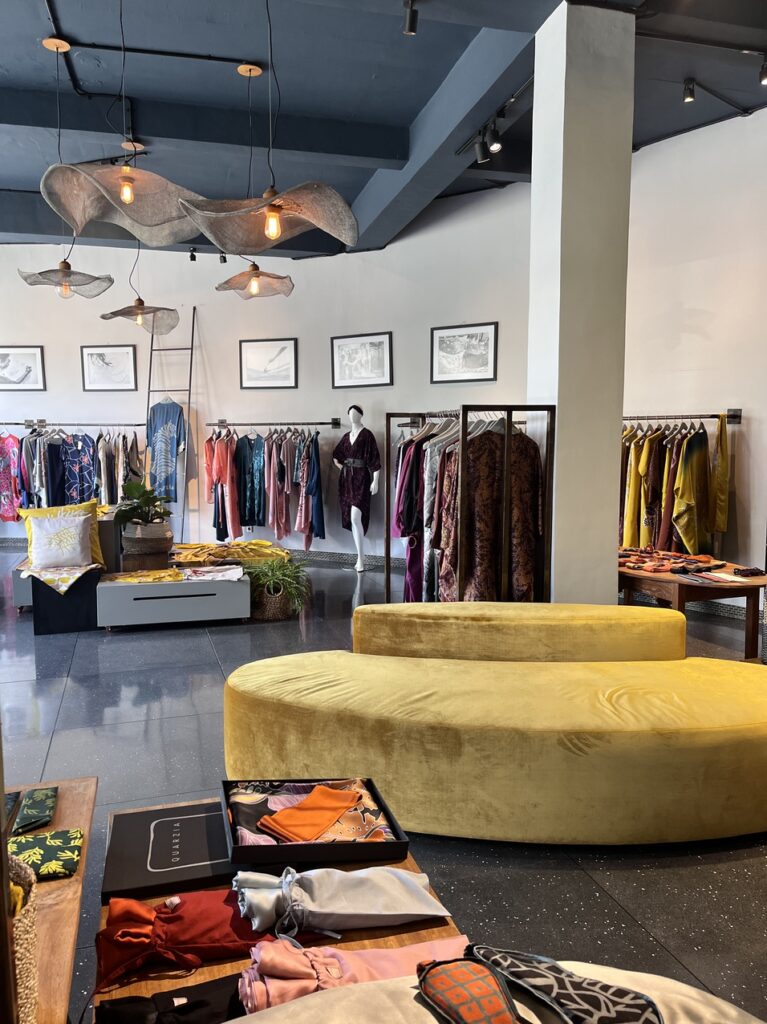
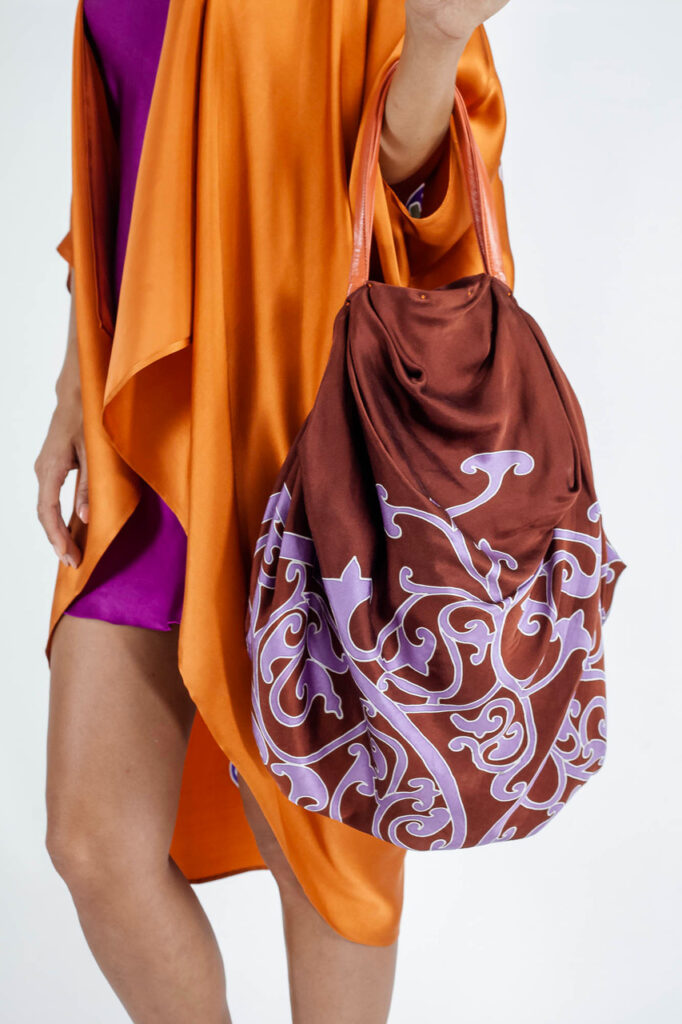
What are your plans for growth?
S: Honestly, for me, we are the perfect size, I would never want to grow significantly. This is my ideal size.
M: Clients are always suggesting different things, from opening a Batik school, to asking why we do not open here or there – including Jakarta… but Jakarta had 17 million people, can you imagine!? But we are always open to new ideas. Our growth plan is: Keep rolling.

